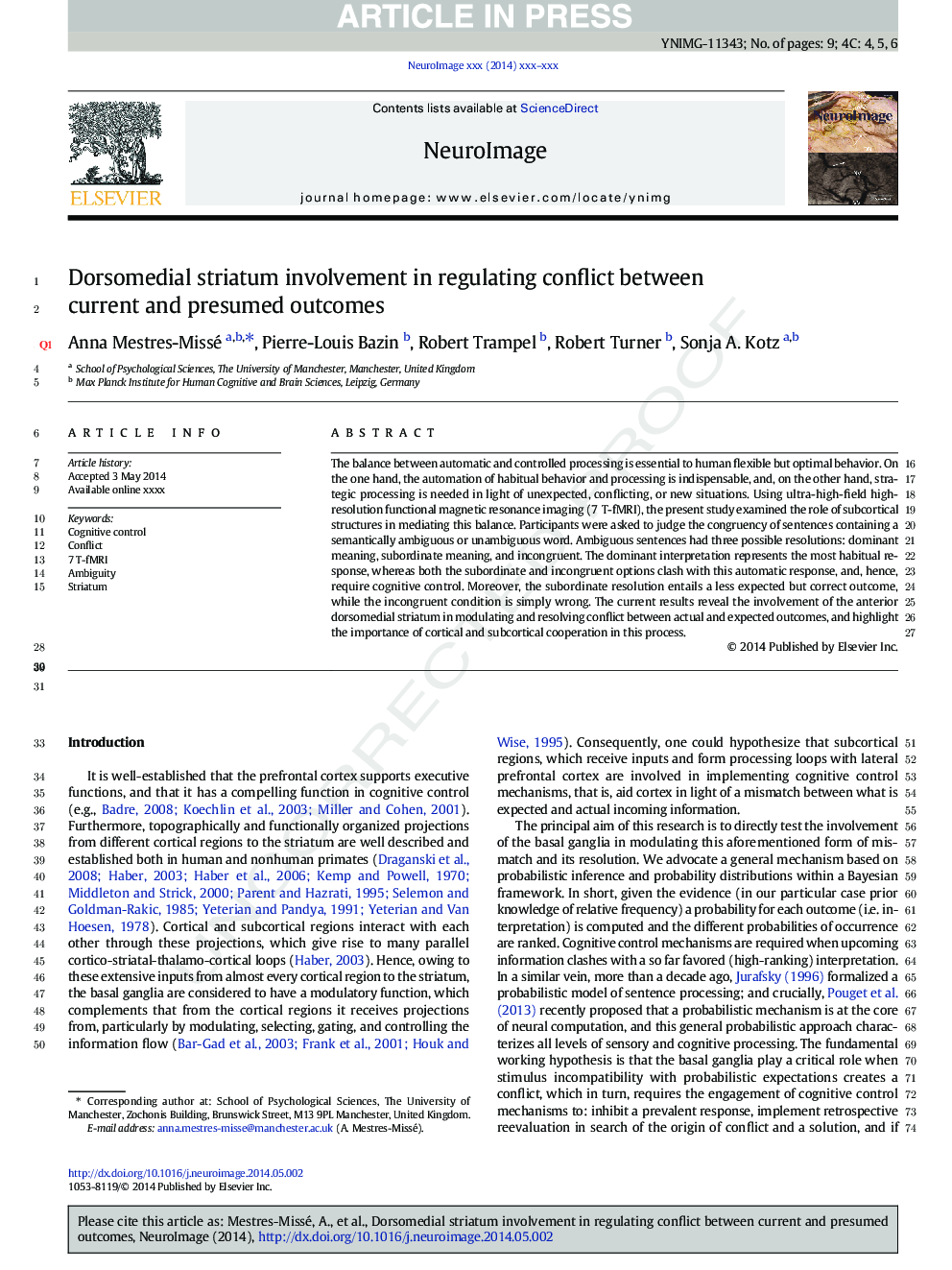| Article ID | Journal | Published Year | Pages | File Type |
|---|---|---|---|---|
| 6026906 | NeuroImage | 2014 | 9 Pages |
Abstract
The balance between automatic and controlled processing is essential to human flexible but optimal behavior. On the one hand, the automation of habitual behavior and processing is indispensable, and, on the other hand, strategic processing is needed in light of unexpected, conflicting, or new situations. Using ultra-high-field high-resolution functional magnetic resonance imaging (7Â T-fMRI), the present study examined the role of subcortical structures in mediating this balance. Participants were asked to judge the congruency of sentences containing a semantically ambiguous or unambiguous word. Ambiguous sentences had three possible resolutions: dominant meaning, subordinate meaning, and incongruent. The dominant interpretation represents the most habitual response, whereas both the subordinate and incongruent options clash with this automatic response, and, hence, require cognitive control. Moreover, the subordinate resolution entails a less expected but correct outcome, while the incongruent condition is simply wrong. The current results reveal the involvement of the anterior dorsomedial striatum in modulating and resolving conflict between actual and expected outcomes, and highlight the importance of cortical and subcortical cooperation in this process.
Related Topics
Life Sciences
Neuroscience
Cognitive Neuroscience
Authors
Anna Mestres-Missé, Pierre-Louis Bazin, Robert Trampel, Robert Turner, Sonja A. Kotz,
